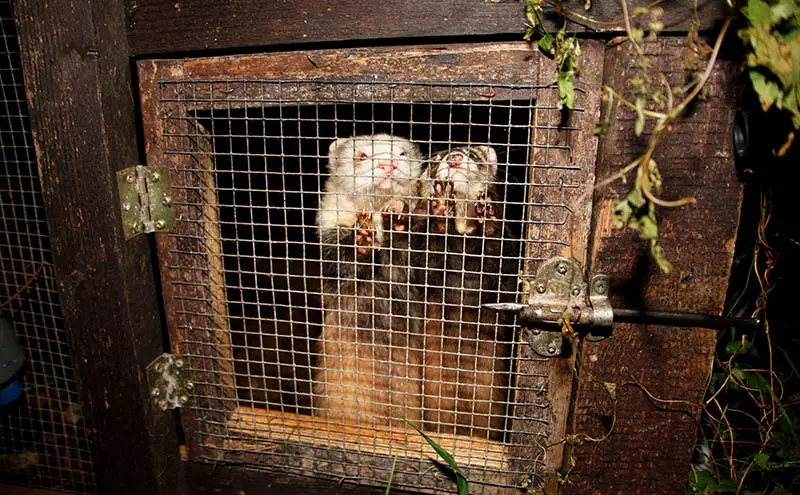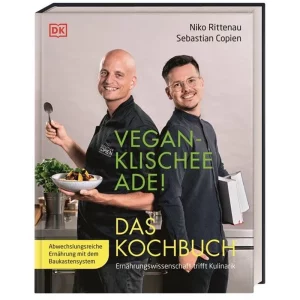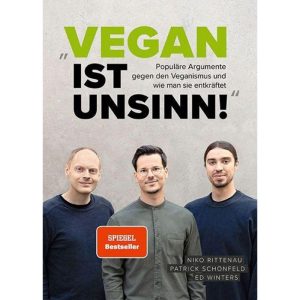Why do we buy products with fur - and how can we save fur animals? Questions upon questions. Hats, coats and scarves littered with the fur of other creatures - if you want to be beautiful, you have to suffer, you might think.
I used to have a jacket with real fur myself because I simply didn't know how much suffering was behind it. With this knowledge came the change. And I find it hard to imagine that anyone would prefer clothes or other products with fur if they were aware of the background to the fur industry.
In this article, I would therefore like to shed some light on the dark fur industry, give you the true background and also discuss the question of whether fur products are still appropriate and sensible in this day and age. Let's go!
Here you can find a short overview in advance:
Definition: What is fur anyway?
Fur is the Exfoliated skin from animals with mostly dense hair, which is usually made into garments, their trimmings or accessories. Some are specifically hunted, caught and bred for their production - others are considered pests. Cases are also often a by-product - for example in the meat-producing industry. Factory Farming.
Furskins and fur products were among the earliest merchandise. Until the 17th century, they were also allowed in Europe only worn by certain groups of people and estates be
The European Union regulates the requirements for the keeping and breeding of fur animals. There is no general ban on the fur trade.
A distinction is made, for example, between Pet fur, livestock fur and wild animal fur. The trade in pet fur, such as that of cats or dogs, is prohibited in the EU. However, livestock and wild animal fur is generally a legal and very popular commodity.
Some countries, such as Austria, Norway or the Netherlandshave therefore extended the European requirements and banned fur farms at national level. In Germany However, fur farms are still permitted provided that the husbandry requirements are met.
Animal species: Which animals are killed for fur?

So the definition is clear. But which animals are actually tortured or killed for fur? Or to put it another way: Which animals have to lose their lives so that we humans can gain fur?
Here are some Animal specieswho have to suffer because of their fur:
- Minks
- Marten
- Foxes
- Dogs
- Cats
- Sheep
- Goats
- Hamster
- Rabbit
- Lynxes
- Weasel
- Squirrel
- Beaver
- Nutria
- Raccoons
- Coyotes
- Badgers
- Seals
- Chinchillas
- …
But the list is almost endless.
Tip: Have a look at my article about Documentaries about factory farming. One recommendation from this is the Dominion film, which will also give you deeper insights into the fur industry.
Statistics: What facts and figures about fur animals and the fur industry highlight the problem?
To get a better idea of the extent of the fur trade and to get a specific motivation to change something about it, here's a handful more Facts and figures of the fur industry for you:
- Up to 229 animals have to die for one fur coat.1 (100 cm length = 80 squirrels, 64 chinchillas, 20-28 minks, 38 rabbits, 8-10 foxes and 9 lynxes).
- 12,700,000 foxes were processed into fur worldwide in 2017. In the same period, 63,100,000 mink were also killed for fur products.
- 46.9 percent of the furs from the German fur industry come from breeding and farming. 37.6 percent are a product of the meat industry and 15.3 originate from pest control. Only 0.2 percent of the furs are due to hunting.
- In 2016, Germany imported fur clothing worth 17,764,447 US dollars from China and raw fur pelts worth 7,800,620 US dollars from Russia.2 In these countries, there are no or only very weak regulations for the keeping and killing of fur animals.
- 65 million fur animals die every year for the fur industry.3
Advantages & disadvantages: What are the pros and cons of real fur?
I promised that I would discuss whether fur products are still in keeping with the times. In this paragraph, I would therefore like to compare the advantages and disadvantages of fur and decide whether it is really still up to dateto keep animals for their fur.
Notice: Of course, I find it difficult to find any benefits at all for ethical reasons. Nevertheless, I try to get a fair basis for my final opinion.
Advantages
- Optics: Yes, fur on the hood already looks chic and makes something.
- Heat: In the past, fur was mainly worn for its warming properties. Today, however, this is no longer absolutely necessary.
- Waste product: If fur is a waste product from the meat industry, it might be acceptable. However, most fur is not an incidental waste product.
- Longevity: Fur products can be inherited and, with good care, can be reused forever. So no one would need two or three fur coats.
Disadvantages
- Torturous breeding only for fur: Animals are tortured in cramped cages and killed well before their life expectancy so that we humans can adorn ourselves with their fur.
- Weight gain: Fur animals are often bred to weigh twice as much as their wild counterparts. They collapse under this weight.
- Futility: There are so many other organic materials available to us today for our garments. Feel free to take a look at the post about sustainable fashion.
- Imports: Fur products are not banned in Germany and in most cases are imported from abroad. For example, from China or Russia, where there are more lenient or no requirements for the keeping and killing of fur animals.
Since the disadvantages are cruel and the few weak advantages outweigh them, wearing fur is no longer in keeping with the times in my opinion.
Tip: In the article about Things that are superfluous today, you will learn even more objects and behaviors that no longer make sense.
4 tips: How can each of us save furry animals?
Here I would like to list exactly how you can use the Fighting the fur industry every day and countless Help animals in your everyday life simply by following your heart.
1. refrain from buying and wearing fur
The problem with fur is relatively easy to solve by no longer buying and wearing fur products. Because As demand decreases, so does the raison d'être the fur industry.
Important: Don't wear heirlooms or other items of clothing with fur either, so that you don't walk around like a walking advertisement for fur products. Very few people can tell the difference between real fur and fake fur at first glance.
2. supported petitions and organizations
Sign or start online petitions in the fight against the fur industry. Signature lists have already eliminated so many abuses in our society. Especially the topic of fur arouses emotions and can sweep an incredible number of people off their feet.
Also animal welfare organizations can of course always use your support.
3. learn to distinguish between real and fake fur
If you still want to buy fur products, then prefer faux fur. You can recognize real fur by the undercoat at the bottom of the hairline, where the hair adheres to real leather. You can find more tips at Distinguish real fur and artificial fur.
4. share your knowledge with others
Find out more and tell your family and friends about the background described here whenever you can. In this way you create a Greater awareness of the cruel origin of animal fur in our society.
Do you have any other ideas to put an end to the fur industry? Then feel free to write me a comment!
Wear fur? Definitely no longer in keeping with the times!
At the latest after the very informative documentary embedded here, you are surely also of the opinion that we humans do not have to wear fur or the body parts of animals as jewelry, right?
Everyone knows that fur is an animal product. However, we must realize that behind every fur product there is at least one, if not hundreds of tortured and killed animals. Not a single animal is kept in a species-appropriate manner - and not a single animal dies painlessly in the process. That is simply impossible.
"Animal protection is education to humanity."
Albert Schweitzer, Franco-German researcher, doctor and pacifist (1875-1965)
I hope that this article has opened your eyes to the background of the fur industry and convinced you to stop wearing fur. Do you have any questions or suggestions on the subject? Then I look forward to your comment.
Stay animal-friendly,

PS: Leather is also not just a by-product of the meat industry. In the article Is leather sustainable? you can learn more about it. Also feel free to check out my article about the best vegan YouTubers to motivate you to actively protect animals.
References:
- Vegan is unhealthy: Fur is fashion!, YouTube, 09.01.2018, Web, 09.12.2024 at 12:22, in: https://youtu.be/Q6X4A7hUpy8. ↩︎
- L. Malberger, D. Lüdemann (2018): Germany, land of fur collars (as at: 02.03.2018), available at https://t1p.de/ht8k. [09.12.2024]. ↩︎
- F. Schreckenbach: Why fur is back or has never been gone: The Fur World in Numbers, available at https://t1p.de/6u50 [09.12.2024]. ↩︎









